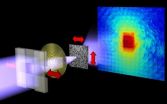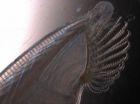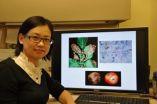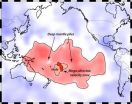Turning repulsive feelings into desires
2013-02-07
(Press-News.org) ANN ARBOR—Hunger, thirst, stress and drugs can create a change in the brain that transforms a repulsive feeling into a strong positive "wanting," a new University of Michigan study indicates.
The research used salt appetite to show how powerful natural mechanisms of brain desires can instantly transform a cue that always predicted a repulsive Dead Sea Salt solution into an eagerly wanted beacon or motivational magnet.
Mike Robinson, a research fellow in the U-M Department of Psychology and the study's lead author, said the findings help explain how related brain activations in people could cause them to avidly want something that has been always disliked.
This instant transformation of motivation, he said, lies in the ability of events to activate particular brain circuitry—a structure called the nucleus accumbens, which sits near the base of the front of the brain and is also activated by addictive drugs.
Cues for rewards often trigger intense motivation. The smell of food can make a person suddenly feel hungry when this wasn't the case earlier. Drug cues may prompt relapse in addicts trying to quit. In some cases, desires may be triggered even for a relatively unpleasant event.
Researchers studied how rats responded to metal objects that represented either pleasant sugar or disgustingly intense Dead Sea saltiness. The rats quickly learned to jump on and nibble the sweetness cue, but turned away from and avoided the saltiness cue.
But one day the rats suddenly woke up in a new state of sodium appetite induced by drugs given the night before. On their first re-encounter with the saltiness cue in the new appetite state, their brain systems became activated and the rats instantly jumped on and nibbled the saltiness cue as though it were the sugar cue.
"The cue becomes avidly 'wanted' despite knowledge the salt always tasted disgusting," Robinson said.
The sudden brain changes help explain how an event, such as taking an addictive drug, could become "wanted" despite a person's knowledge of the negative and unpleasant consequences of the drug.
"Our findings highlight what it means to say that drugs hijack our natural reward system," said Robinson, who authored the new study with Kent Berridge, James Olds Collegiate Professor of Psychology and Neuroscience.
INFORMATION:
The findings appear in the current issue of Current Biology: www.sciencedirect.com/science/article/pii/S0960982213000195
END
ELSE PRESS RELEASES FROM THIS DATE:
2013-02-07
AUDIO:
In the 1970s and early 1980s, some states lower their minimum legal drinking age below the age of 21. Those lower drinking ages have been linked to bad things, from...
Click here for more information.
People who grew up in states where it was legal to drink alcohol before age 21 are more likely to be binge drinkers later in life, according to a study by researchers at Washington University School of Medicine in St. Louis.
The findings are available online in Alcoholism: ...
2013-02-07
For more than 100 years radiography meant: don't move! In order to visualize nanostructures such as biological cells, the porous structure of cement or storage fields of magnetic disks, the experimentators had to avoid any kind of vibration of X-ray microscope and sample. In addition, only a small percentage fraction of the incoming X-ray radiation could be used. Using special filters, they had to select exactly the fraction with the right properties – for example, the right wavelength.
Contributions of different wavelengths separated
Pierre Thibault of the Technische ...
2013-02-07
CHICAGO -- Feeding human breast milk to very-low-birth-weight infants greatly reduces risk for sepsis and significantly lowers associated neonatal intensive care unit (NICU) costs, according to a study by Rush University Medical Center researchers.
The study, published Jan. 31 in the advance online version of the Journal of Perinatology, showed that every 10 milliliters of human milk per kilogram that a very low birth weight infant received during the first 28 days of life decreased the odds of sepsis by almost 20 percent.
A daily dose of 25 to 49.99 milliliters of ...
2013-02-07
WOODS HOLE, MASS. -- Among the animals that are appealing "cover models" for scientific journals, lancelets don't spring readily to mind. Slender, limbless, primitive blobs that look pretty much the same end to end, lancelets "are extremely boring. I wouldn't recommend them for a home aquarium," says Enrico Nasi, adjunct senior scientist at the Marine Biological Laboratory (MBL). Yet Nasi and his collaborators managed to land a lancelet on the cover of the Journal of Neuroscience last December. These simple chordates, they discovered, offer insight into our own biological ...
2013-02-07
RIVERSIDE, Calif. — When a pathogen attacks a plant, infection usually follows after the plant's immune system is compromised. A team of researchers at the University of California, Riverside focused on Phytophthora, the pathogen that triggered the Irish Famine of the 19th century by infecting potato plants, and deciphered how it succeeded in crippling the plant's immune system.
The genus Phytophthora contains many notorious pathogens of crops. Phytophthora pathogens cause worldwide losses of more than $6 billion each year on potato (Phytophthora infestans) and about ...
2013-02-07
SALT LAKE CITY, Feb. 7, 2013 – A University of Utah seismologist analyzed seismic waves that bombarded Earth's core, and believes he got a look at the earliest roots of Earth's most cataclysmic kind of volcanic eruption. But don't worry. He says it won't happen for perhaps 200 million years.
"What we may be detecting is the start of one of these large eruptive events that – if it ever happens – could cause very massive destruction on Earth," says seismologist Michael Thorne, the study's principal author and an assistant professor of geology and geophysics at the University ...
2013-02-07
Cancer drugs of the new, molecular generation destroy malignant breast tumors in a targeted manner: They block characteristic molecules on tumor cells - receptors for the hormones estrogen or progesterone, or a co-receptor, called HER2, that binds to many growth factors. But about one in every six breast tumors has none of these receptors. Such cancers, called triple-negative, are particularly aggressive and notoriously difficult to treat.
Some of these therapy-resistant cancers have a potential molecular target for cancer drugs, a growth-factor receptor called EGFR, ...
2013-02-07
Scientists hope that one day in the distant future, miniature, medically-savvy computers will roam our bodies, detecting early-stage diseases and treating them on the spot by releasing a suitable drug, without any outside help. To make this vision a reality, computers must be sufficiently small to fit into body cells. Moreover, they must be able to "talk" to various cellular systems. These challenges can be best addressed by creating computers based on biological molecules such as DNA or proteins. The idea is far from outrageous; after all, biological organisms are capable ...
2013-02-07
Caving in to social pressure — such as saying that you love a movie because friends do — makes for good vibes about being part of a group and can produce more of the same conduct, according to a Baylor University sociological study. The finding has implications for people ranging from philanthropists to gangs, researchers said.
"The punch line is very simple: Conformity leads to positive feelings, attachments, solidarity — and these are what motivate people to continue their behavior," said Kyle Irwin, Ph.D., an assistant professor of sociology at Baylor and lead author. ...
2013-02-07
Before they go all-out supernova, certain large stars undergo a sort of "mini-explosion," throwing a good-sized chunk of their material off into space. Though several models predict this behavior and evidence from supernovae points in this direction, actually observations of such pre-explosion outbursts have been rare. In new research led by Dr. Eran Ofek of the Weizmann Institute, scientists found such an outburst taking place a short time – just one month – before a massive star underwent a supernova explosion.
The findings, which recently appeared in Nature, help ...
LAST 30 PRESS RELEASES:
[Press-News.org] Turning repulsive feelings into desires




